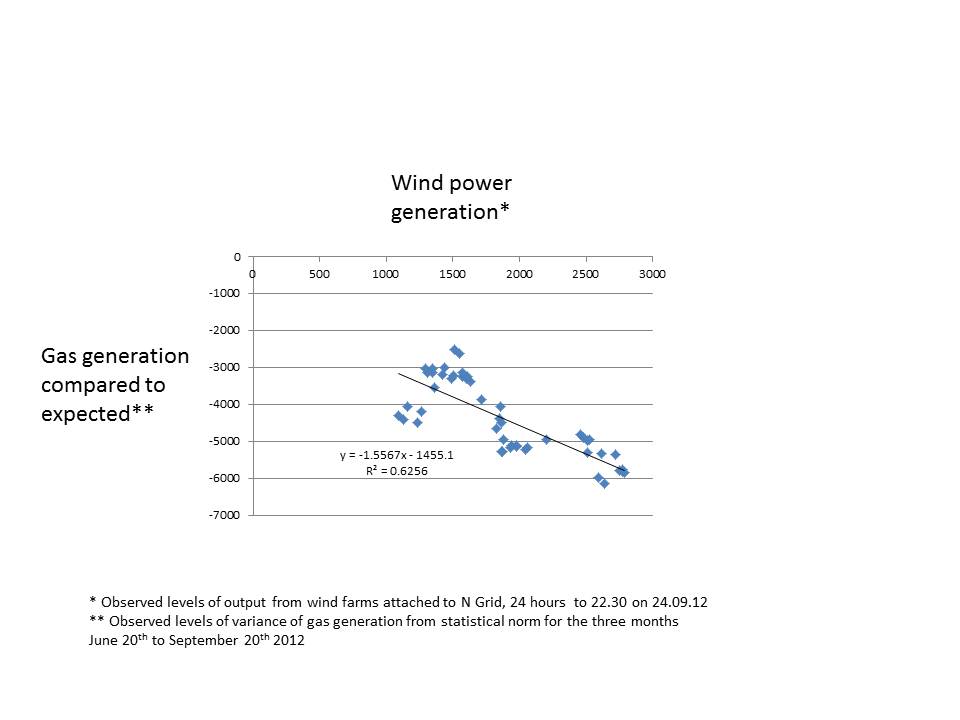Wind reduces carbon emissions
Plenty of people still say that wind power is useless because fossil fuel power stations still have to operate to back up the wind turbines just in case the wind drops. This is an incorrect view. Yes, the operator of the national electricity grid has to have surplus capacity waiting to generate in case of the unexpected loss of major power station, as occasionally happens. But the amount of wind power rises and falls relatively slowly across the UK and the grid doesn’t need to have a separate back-up to deal with the variation in this source of power.
Put at its simplest, when the wind is blowing the UK is using less fossil fuel to create electricity. This saves money on fuel and reduces carbon emissions.
In an article on the Guardian web site to be published on Wednesday 25th, Mark Lynas and I estimate the reduction in greenhouse gases arising from the UK’s rapidly growing fleet of wind farms. Our calculations use data produced every half hour for the three months to 20th September 2012 to show that – on average – a one gigawatt increase in wind power reduces the amount of gas generation by almost exactly the same amount. If you are that type of person, all the numbers are available to play with on the Guardian’s pages.
The last couple of days have also been very windy. So I thought it might a good check to look at the data and show visually that wind turbines save carbon emissions. This chart uses only 48 data points, compared to the 4,400 in our main statistical analysis. The technique employed is the same. We estimate the expected level of gas powered output (which varies strongly with the demands placed on the national grid). Then we plot the difference between the actual and expected use of gas power stations compared to the level of wind power available. The correlation is immediately clear to the eye.
